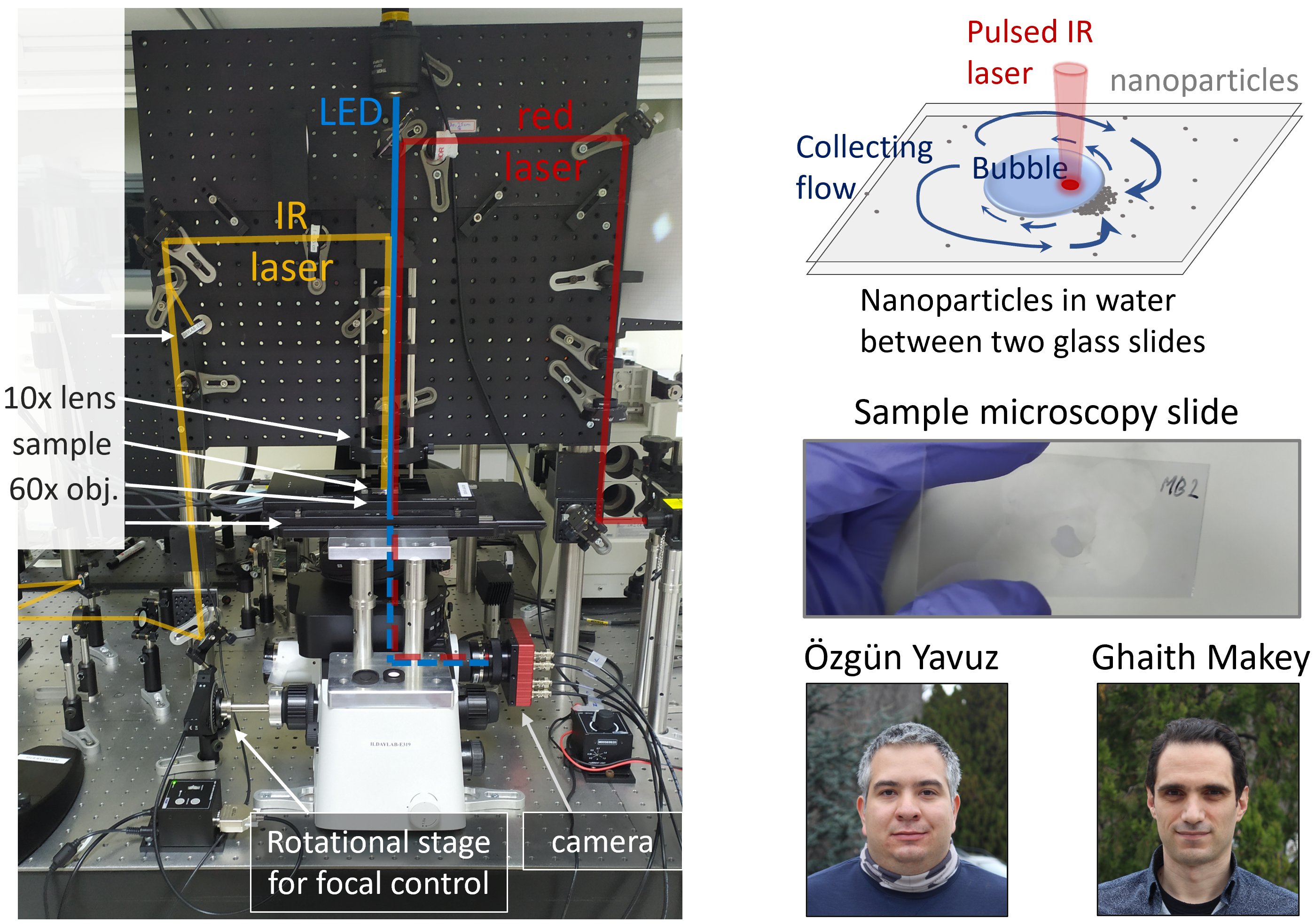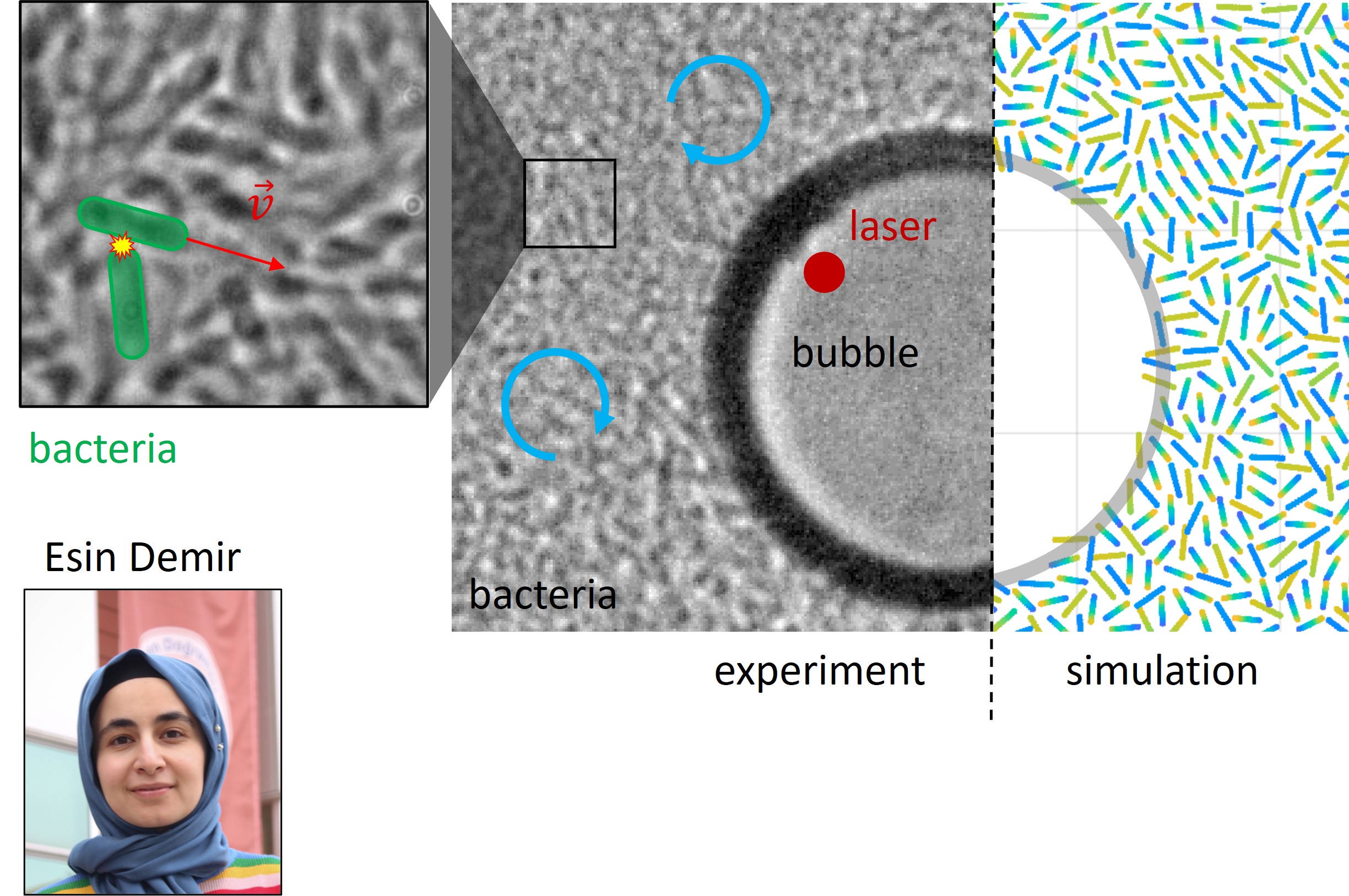
Hybrid illumination for 3D particle imaging
Extracting 3D positions of moving microspheres in dense liquid suspensions is nontrivial. When particles are well-separated inline holography methods have been successfully used, where the diffraction rings of the particles uniquely define their size/position. To extend this to denser systems, where the separation of the diffraction rings of different particles is lost we can untangle these by supplementing the images coming from laser illumination with bright-field data.
Simulations of the holographic response are used within an iterative scheme to reveal the 3D positions. The algorithm convergence is defined by maximizing image similarity between simulated images from candidate particle positions and the experimental images.
This work was performed together with Ghaith Makey and Özgün Yavuz in the Simply Complex Lab of Prof. Serim Ilday.
Bacterial colonies performing turbulence
Bacterial colonies exhibit turbulent motion under appropriate density and spatial constraints. We simulated bacteria moving in thin layers of medium by a self-propelling rods-model.
The self-propelling model is based on the theoretical model in where rods exist of spherical potentials that are lined-up to approximate an interaction potential of rounded rods.
Simulations were performed to support the experimental work of Esin Demir in the Simply Complex Lab of Prof. Serim Ilday.
